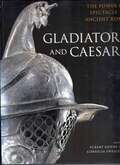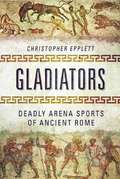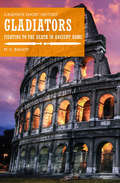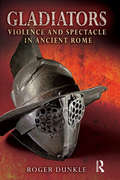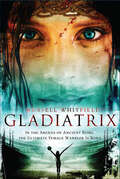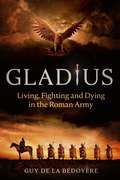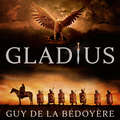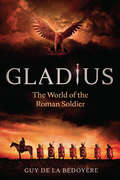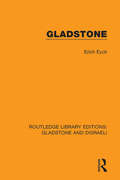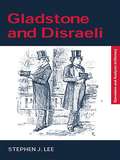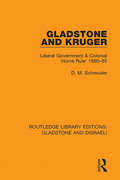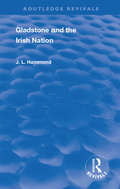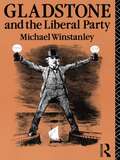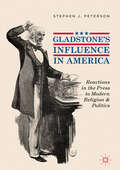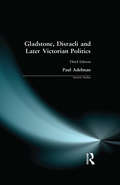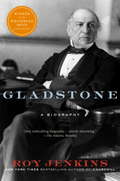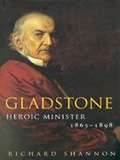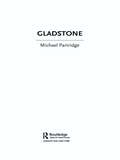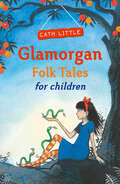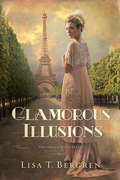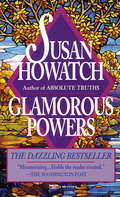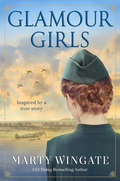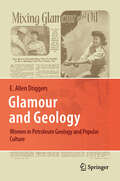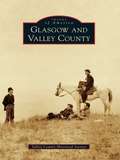- Table View
- List View
Gladiators and Caesars: The Power of Spectacle in Ancient Rome
by Eckart Köhne Cornelia EwiglebenBread and circuses were what the Romans demanded of their emperors, and for more than 500 years spectacular events in amphitheaters, circuses, and theaters were the most important leisure activities of the masses in all parts of the Roman empire. In Rome itself, public holidays featuring magnificent and costly shows occupied more than half the year. Comedies and tragedies, pantomimes and bawdy folk plays were staged in the theaters, while in the arena of the Colosseum, opened in a.d. 80, gladiators fought in pairs or with wild animals to satisfy the blood lust of the crowd, and hundreds of thousands of race-goers packed the stands of the Circus Maximus to enjoy the thrills of chariot racing. The organization of games came to be part and parcel of electioneering in towns and cities and was increasingly used as a means to consolidate the power of the reigning emperor. Like the sports stars of today, the top gladiators, charioteers, and actors were folk heroes, and the power of their universal appeal was recognized and exploited by politicians and emperors alike. Two thousand years later, the Roman games may seem remote, but, as this superbly illustrated book shows, they satisfied the same need for excitement and hero-worship that gives rise to the intense media coverage of sports in our own time.
Gladiators: Deadly Arena Sports of Ancient Rome
by Christopher EpplettA history of gladiators-with an added bite!It’s hard for modern readers to truly grasp the spectacle that was arena sports in ancient Rome, which pitted man against man and man against beast in mortal combat. Our modern games of football and hockey, or even boxing and MMA, truly pale in comparison. The Gladiators is a comprehensive survey of these ancient sports, focusing on gladiatorial combat and the beast hunts (venationes). While many books have been written on arena spectacles in ancient Rome, they generally neglect the venationes, despite the fact that the beast hunts, of various dangerous wild animals (including lions, tigers, elephants, and rhinos), were almost as popular as gladiatorial spectacles and endured over a longer period of time. Dr. Christopher Epplett gives a full and detailed treatment of both types of spectacle.The author starts by explaining the origins of these bloody combat sports in the late Roman Republic before surveying the growth of these events during the first two centuries of the Empire, when emperors possessed the resources to stage arena spectacles on an unmatched scale. The details of the training, equipment, and fighting styles used by different types of combatants are covered, as are the infrastructure of the arenas and behind-the-scenes organization that was essential to the successful staging of arena events. Particular attention is paid to the procurement of the countless wild animals necessary to stage venationes throughout the Empire. A gladiator book with added bite, The Gladiators is sure to be welcomed by scholars and general readers alike.Skyhorse Publishing, as well as our Arcade imprint, are proud to publish a broad range of books for readers interested in history--books about World War II, the Third Reich, Hitler and his henchmen, the JFK assassination, conspiracies, the American Civil War, the American Revolution, gladiators, Vikings, ancient Rome, medieval times, the old West, and much more. While not every title we publish becomes a New York Times bestseller or a national bestseller, we are committed to books on subjects that are sometimes overlooked and to authors whose work might not otherwise find a home.
Gladiators: Fighting to the Death in Ancient Rome (Casemate Short History)
by M.C. BishopA concise history of ancient Roman gladiators—how they lived, fought, and died in the Colosseum—by the archeologist, author, and Roman military expert. Heroic despite their lowly status, the gladiators of ancient Rome fought vicious duels in large arenas filled with baying crowds. Few lasted more than a dozen fights, yet they were a valuable asset to their owners. Gladiators reveals the fascinating history of these men, how they fought, and how their weapons and techniques developed—debunking myths along the way. Historian M. C. Bishop examines the different forms of gladiator combat, including simulated naval battles held on large artificial lakes. He also discusses how gladiators were carefully paired against each other to balance their strengths and weaknesses. Although their lives were brutal and short, gladiators were the celebrities of their day, admired for their bravery. This short history reveals what we know about the gladiators and how we know it: ancient remains, contemporary literature, graffiti, modern attempts to reconstruct ancient fighting techniques, and the astonishing discovery at Pompeii where a complete gladiator barracks was found alongside multiple skeletons, telling their story.
Gladiators: Violence and Spectacle in Ancient Rome
by Roger DunkleThe games comprised gladiatorial fights, staged animal hunts (venationes) and the executions of convicted criminals and prisoners of war. Besides entertaining the crowd, the games delivered a powerful message of Roman power: as a reminder of the wars in which Rome had acquired its empire, the distant regions of its far-flung empire (from where they had obtained wild beasts for the venatio), and the inevitability of Roman justice for criminals and those foreigners who had dared to challenge the empire's authority. Though we might see these games as bloodthirsty, cruel and reprehensible condemning any alien culture out of hand for a sport that offends our sensibilities smacks of cultural chauvinism. Instead one should judge an ancient sport by the standards of its contemporary cultural context. This book offers a fascinating, and fair historical appraisal of gladiatorial combat, which will bring the games alive to the reader and help them see them through the eyes of the ancient Romans.It will answer questions about gladiatorial combat such as: What were its origins? Why did it disappear? Who were gladiators? How did they become gladiators? What was there training like? How did the Romans view gladiators? How were gladiator shows produced and advertised? What were the different styles of gladiatorial fighting? Did gladiator matches have referees? Did every match end in the death of at least one gladiator? Were gladiator games mere entertainment or did they play a larger role in Roman society? What was their political significance?
Gladiatrix
by Russell WhitfieldThe Ancient Roman public's hunger for gladiatorial combat has never been greater. The Emperor Domitian's passion for novelty and variety in the arena has given rise to a very different kind of warrior: the Gladiatrix.Sole survivor of a shipwreck off the coast of Asia Minor, Lysandra finds herself the property of Lucius Balbus, owner of the foremost Ludus for female gladiators in the Eastern Empire. Lysandra, a member of an ancient Spartan sect of warrior priestesses, refuses to accept her new status as a slave. Forced to fight for survival, her deadly combat skills win the adoration of the crowds, the respect of Balbus.But Lysandra's Spartan pride also earns her powerful enemies: Sorina, Gladiatrix Prima and leader of the Barbarian faction, and the sadistic Numidian trainer, Nastasen. When plans are laid for the ultimate combat spectacle to honor the visit of the emperor's powerful new emissary, Lysandra must face her greatest and deadliest trial. This is a thrilling first novel that combines fascinating historical detail with blistering action.
Gladius: Living, Fighting and Dying in the Roman Army
by Guy de BédoyèreThe Roman army was the greatest fighting machine the ancient world produced. The Roman Empire depended on soldiers not just to win its wars, defend its frontiers and control the seas but also to act as the engine of the state. Roman legionaries and auxiliaries came from across the Roman world and beyond. They served as tax collectors, policemen, surveyors, civil engineers and, if they survived, in retirement as civic worthies, craftsmen and politicians. Some even rose to become emperors. Gladius takes the reader right into the heart of what it meant to be a part of the Roman army through the words of Roman historians, and those of the men themselves through their religious dedications, tombstones, and even private letters and graffiti. Guy de la Bédoyère throws open a window on how the men, their wives and their children lived, from bleak frontier garrisons to guarding the emperor in Rome, enjoying a ringside seat to history fighting the emperors' wars, mutinying over pay, marching in triumphs, throwing their weight around in city streets, and enjoying esteem in honorable retirement.
Gladius: Living, Fighting and Dying in the Roman Army
by Guy de BédoyèreThe Roman army was the greatest fighting machine the ancient world produced. The Roman Empire depended on soldiers not just to win its wars, defend its frontiers and control the seas but also to act as the engine of the state. Roman legionaries and auxiliaries came from across the Roman world and beyond. They served as tax collectors, policemen, surveyors, civil engineers and, if they survived, in retirement as civic worthies, craftsmen and politicians. Some even rose to become emperors. Gladius takes the reader right into the heart of what it meant to be a part of the Roman army through the words of Roman historians, and those of the men themselves through their religious dedications, tombstones, and even private letters and graffiti. Guy de la Bédoyère throws open a window on how the men, their wives and their children lived, from bleak frontier garrisons to guarding the emperor in Rome, enjoying a ringside seat to history fighting the emperors' wars, mutinying over pay, marching in triumphs, throwing their weight around in city streets, and enjoying esteem in honorable retirement.
Gladius: The World of the Roman Soldier
by Guy de la BédoyèreThis &“encyclopedic [volume] collects pretty much every fact known about what it was like to be in the military arm of the Roman Empire" (The New York Times Book Review). The Roman army was the greatest fighting machine in the ancient world. It was also the single largest organization in Western antiquity, taking in members from all classes, from senators to freed slaves. The Roman Empire depended on its army not just to win wars, defend its frontiers, and control the seas, but to act as the very engine of the state. In Gladius—the Latin word for sword—Guy De la Bédoyère reveals what it meant to be a soldier in the army that made the empire. Surveying numerous aspects of Roman military life between 264 BCE and 337 CE, De la Bédoyère draws not only on the words of famed Roman historians, but also those of the soldiers themselves, as recorded in their religious dedications, tombstones, and even private letters and graffiti. He vividly recreates their everyday lives, whether in a bleak frontier garrison in Britain or North Africa, guarding the emperor in Rome, fighting on foreign battlefields, mutinying over pay, marching in triumph, throwing their weight around on city streets, or enjoying honorable retirement. By illuminating the history of one organization that reflected all corners of the Roman world, Gladius gives us a portrait of an ancient society that is unprecedented in both its broad sweep and gritty intimacy.
Gladstone (Routledge Library Editions: Gladstone and Disraeli #1)
by Erich EyckOriginally published in 1966 and translated by Bernard Miall, Gladstone traces William Gladstone’s career from his election to Parliament in 1832, to his funeral in Westminster Abbey. The book portrays Gladstone as a firm adherent of Toryism and it describes his relations with Peel and Palmerston, as well as giving a well-founded account of his growing Liberalism and his rivalry with Disraeli. Eyck has written a generous and perceptive account of Gladstone’s life and career which since its first publication in 1938 has become generally recognized as a valuable contribution to the history of the nineteenth century.
Gladstone and Disraeli
by Stephen J. LeeGladstone and Disraeli surveys and compares the careers of these two influential Prime Ministers. Stephen J. Lee examines how Gladstone and Disraeli emerged as leaders of the two leading parties and goes on to consider their time in power, analyzing many different aspects of their careers. Using a wide variety of sources and historiography, Lee compares and contrasts the beliefs of Gladstone and Disraeli, their effect on the economy, social reform, the Irish problem and parliamentary reform, and on foreign policy.
Gladstone and Kruger: Liberal Government & Colonial 'Home Rule' 1880-85 (Routledge Library Editions: Gladstone and Disraeli #3)
by Deryck SchreuderOriginally published in 1969, Gladstone and Kruger examines British reactions to the Afrikaner nationalism. Beginning with the first Anglo-Boer war of 1880-81, it examines the formulation of policy after the British defeat at Majuba Hill. A that moment, the dangers of a pan-Afrikaner revolt in the Transvaal, Orange Free State and Cape Province seemed imminent, and the British presence in southern Africa seemed very much at risk. Schreuder shows how the devolution of metropolitan Imperial power on to local ministries conflicted with the Whig concern for the preservation of British dominance and prestige abroad and provides a commentary on the Liberal response to the Irish problem.
Gladstone and the Irish Nation (Routledge Revivals)
by J. L. HammondOriginally published in 1964, in this work of wisdom, originality, and power, the great Liberal scholar, J. L. Hammond, explores and expounds Gladstone's attempt to secure justice for Ireland against the rising tide of English Imperialist feeling. The origins of the Irish Church crisis of 1869, of the land agitations of the seventies and eighties, and of the Home Rule explosion of 1885-6 that disrupted the British party system, are traced back, by Hammond's mastery of the archives, to their historical causes. His imaginative sympathy accompanies Gladstone on the eight years of political suffering that followed the explosion, till at the age of eighty-four the Grand Old Man could finally retire. In the new 1964 introduction to this reprint of the rare 1938 edition, this work is described as the most formidable and incisive piece of original research yet published on the history of England and Ireland in the second half of the nineteenth century.
Gladstone and the Liberal Party (Lancaster Pamphlets)
by Michael J. WinstanleyWith a public career spanning 62 years, Gladstone dominated the Victorian political arena. Yet he remains an enigmatic figure; a high Anglican, Tory protectionist who became leader of the Liberals, a party associated with free trade and religious Nonconformity. Michael Winstanley examines both Gladstone and the environment in which he operated, concentrating in particular on the political and social composition of the party which he led. He argues that the parliamentary `Gladstonian Liberals' were far from unqualified supporters of Gladstone and that much of his power was derived from his popularity amongst the electorate. He concludes with an assessment of Gladstone's achievements and his political legacy.
Gladstone's Influence in America: Reactions in the Press to Modern Religion and Politics
by Stephen J. PetersonBy the end of the nineteenth century, William Gladstone was arguably the most popular statesman in America since Lincoln. How did a British prime minister achieve such fame in an era of troubled Anglo-American relations? And what do press reactions to Gladstone’s policies and published writings reveal about American society? Tracing Gladstone’s growing fame in the United States, beginning with his first term as prime minister in 1868 until his death in 1898, this volume focuses on periodicals of the era to illuminate how Americans responded to modern influences in religion and politics. His forays into religious controversy highlight the extent to which faith influenced the American cult of Gladstone. Coverage of Gladstone’s involvement in issues such as church disestablishment, papal infallibility, Christian orthodoxy, atheism and agnosticism, faith and science, and liberal theology reveal deepening religious and cultural rifts in American society. Gladstone’s Influence in America offers the most comprehensive picture to date of the statesman’s reputation in the United States.
Gladstone, Disraeli and Later Victorian Politics (Seminar Studies)
by Paul AdelmanA major new edition of this introductory survey of the two main political parties, from the rise of the Liberal Party under Gladstone until the period of Conservative domination under Salisbury in the late nineteenth century. As well as assessing the impact of major political landmarks such as the Great Reform Acts, it also describes the nineteenth century political scene.
Gladstone, Gordon and the Sudan Wars: The Battle over Imperial Invention in the Victorian Age
by Fergus NicollGeneral Gordons death in Khartoum on 26 January 1885 and the fall of the besieged city to the forces of the Mahdi was a crucial episode in British imperial history. It was deeply controversial at the time, and it still is today. Gordon has routinely been depicted as the hero of the story, in contrast to Prime Minister Gladstone who is often portrayed as the villain of the piece, responsible for a policy of drift in Sudan.Fergus Nicolls radical reappraisal, which is based on eyewitness accounts and previously unpublished archive material, refutes the conventional image of both men. Presenting an inside view of Gladstones thinking and decision-making, Nicoll gives the prime minister credit for his steadfast insistence that Britain should have minimal engagement in and zero responsibility for Sudan. Gordon, who succumbed to a lasting mania that skewed his decision-making and undermined his military capacity, is cast in a more sceptical light. This fascinating insight into British policy in Africa exposes the inner workings of government, the influence of the press and public opinion and the power of a book to change a government.Each stage in the rapid sequence of events is reconsidered Gladstones steely determination to avoid involvement, Gordons partial evacuation of Khartoum, the siege, the despatch of the relief expedition that arrived too late, the abandonment of Sudan, and the subsequent political battle over responsibility. The personal cost to both men was great: Gordon lost his life and Gladstone saw his reputation gravely tarnished.
Gladstone: A Biography
by Roy JenkinsFrom the New York Times bestselling author of Churchill, a towering historical biography. William Gladstone was, with Tennyson, Newman, Dickens, Carlyle, and Darwin, one of the stars of nineteenth-century British life. He spent sixty-three of his eighty-nine years in the House of Commons and was prime minister four times, a unique accomplishment. From his critical role in the formation of the Liberal Party to his preoccupation with the cause of Irish Home Rule, he was a commanding politician and statesman nonpareil. But Gladstone the man was much more: a classical scholar, a wide-ranging author, a vociferous participant in all the great theological debates of the day, a voracious reader, and an avid walker who chopped down trees for recreation. He was also a man obsessed with the idea of his own sinfulness, prone to self-flagellation and persistent in the practice of accosting prostitutes on the street and attempting to persuade them of the errors of their ways. This full and deep portrait of a complicated man offers a sweeping picture of a tumultuous century in British history, and is also a brilliant example of the biographer's art.
Gladstone: Heroic Minister 1865-1898
by Richard ShannonA careful examination of Gladstone's contributions to England's Parliamentary system.
Gladstone: Palmerston, Disraeli And Gladstone By Their Contemporaries (Routledge Historical Biographies)
by Michael PartridgeGladstone is one of the most important political figures in modern British history. He held the office of Prime Minister four times during a turbulent and changing time in Britain's history. Michael Partridge provides a new survey of Gladstone's life and career, placing him firmly in the context of nineteenth-century Britain, and covering both his intriguing private life and his public career. Surveying a broad range of source material, Partridge begins by looking at Gladstone's early life, education and entry to Parliament, before looking at his marriage and service with Peel. He goes on to look in detail at Gladstone's terms as prime minister concluding with his fourth ministry, when Gladstone, by now in his eighties, returned to power. He tried and failed to resolve the problems of Ireland, which had become his great obsession, for the last time and eventually retired from politics in 1894 and died a few years later.
Glamorgan Folk Tales for Children
by Cath LittleHow do you get rid of a bothersome giant? Have you got a secret like Effie? And what would you do with an invisibility seed? Some of these stories from Glamorgan are strange and sad, some are a bit scary and some are a bit mad. Our ancestors first told them long ago, and people liked them so much they kept passing them on. These stories of magic and adventure belong to everyone. They are meant to be told. Read them, tell them and pass them on yourself! Storyteller Cath Little has gathered together this enchanting collection of tales, illustrated by fellow storyteller and illustrator Peter Stevenson. Told in Cath’s captivating style, these stories will be especially enjoyed by primary school-aged children.
Glamorous Illusions
by Lisa T. BergrenWhen Cora Kensington learns she is the illegitimate daughter of a copper king, her life changes forever. Even as she explores Europe with her new family, she discovers that the most valuable journey is within. The first book in the Grand Tour series takes you from the farms of Montana through England and France on an adventure of forgiveness, spiritual awakening, and self-discovery.
Glamorous Powers (Church of England #2)
by Susan Howatch"Fascinating...convincing...believable." NEWSDAY. The time is 1940. Jonathan Darrow is an Anglican priest when he receives a shattering vision and knows he must leave the monastery that has been his home for seventeen years. As he plunges into the temptations of the real world, a crisis sends him into the labyrinth of his past to pluck out the buried truth beneath the deceptions he has been living through.
Glamour Girls: A Novel
by Marty WingateUSA Today bestselling author Marty Wingate's historical debut is "like reading a personal diary of the brave women who were unsung heroes of WWII," (Rhys Bowen, Royal Spyness mysteries) and will delight readers of Kelly Rimmer's The Things We Cannot Say and Noelle Salazar's The Flight Girls.During World War II, farmer's daughter Rosalie Wright becomes a pilot assisting the RAF. But will a romantic rivalry send her aerial dreams plummeting to earth?Ever since she was 10 years old, Rosalie Wright's eyes have been on the skies. But at the age of 18, on the verge of earning her pilot's license, the English farmer's daughter watches her dreams of becoming an aviatrix fly away without her. Britain's entry into World War II brings civilian aviation to a standstill. Then, Rosalie's father dies, leaving her, her mother, and her brothers to run the farm.Everything changes when she learns that the Air Transport Authority is recruiting women pilots to ferry warplanes across Britain to RAF bases. Despite her mother's objections, Rosalie cannot resist the call of her country--and the lure of the skies. During her training on Gipsy Moth aircraft, Rosalie forms a fast friendship with fellow flyer Caroline Andrews. Her trusty Ferry Pilots Notebook by her side, Rosalie delivers to five airfields in a day--while fighting an endless battle against skeptical male pilots and ground crews.She would much rather spend her time on the wing than on the arm of any man...until she meets gruff pilot Snug Durrant and RAF squadron leader Alan Chersey. Snug is a cynical, wisecracking playboy, and Alan is every WAAF's heartthrob...and Rosalie catches both their eyes. As the war drags on, and casualties mount, will love and tragedy send Rosalie's exhilarating airborne life crashing to the ground?
Glamour and Geology: Women in Petroleum Geology and Popular Culture
by E. Allen DriggersDuring the twentieth century, especially during World War II, female geologists were potrayed as having a glamourous and unique job. Newspapers, the oil industry, and other publications published stories about the glamorous working geologist, comparing them to movie stars and scientists working on the important production of oil. This book explores the image of the female geologist as it changed from the “accomplished” woman of the Victorian era to the professional, and glamourous geologists of World War II and beyond. Women working in geology, especially petroleum geology, embraced the image and some participated in its promotion. In those same newspaper articles, some geologists began to speak out and ultimately discuss some of the problems they experienced while working in the field and in industry. This book discusses the role of working women geologists not only in the profession, but as a part of popular culture in the twentieth century.
Glasgow and Valley County
by Valley County Historical SocietyOnce known only as "Siding 45," Glasgow, Montana, was named by a railroad clerk's random finger poke on a spinning globe in 1887. Resourceful land speculators lured its first homesteaders with the promise, "Pin your faith in Glasgow and you shall wear diamonds." Successful farmers and cowboys initially made the community an agricultural center and the seat of Valley County. The 1930s drought and depression eras brought hard times, however, before the construction of the New Deal Fort Peck Dam helped reinvigorate Valley County communities. Faithful to their pioneer legacy, the people of the "Hi-Line" have more recently successfully refocused on long-established agriculture and developing tourism to continue the historic saga of northeast Montana.
